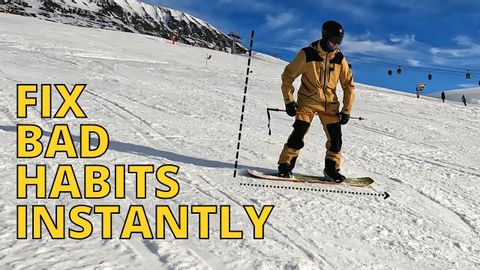簡単なドリルでスノーボードの姿勢を正す (CORRECT SNOWBOARD POSTURE WITH ONE SIMPLE DRILL)
niniba が 2024 年 08 月 30 日 に投稿  この条件に一致する単語はありません
この条件に一致する単語はありません- v.t./i.突き刺す : 刺し込む;貼る : くっつける;とどまる;突き出す;我慢する
- n. (c.)棒
US /ˈslaɪtli/
・
UK /ˈslaɪtli/
US /tɛkˈnik/
・
UK /tekˈni:k/
- n. (c./u.)技術 : 技巧 : テクニック;技能;技法
エネルギーを使用
すべての単語を解除
発音・解説・フィルター機能を解除
